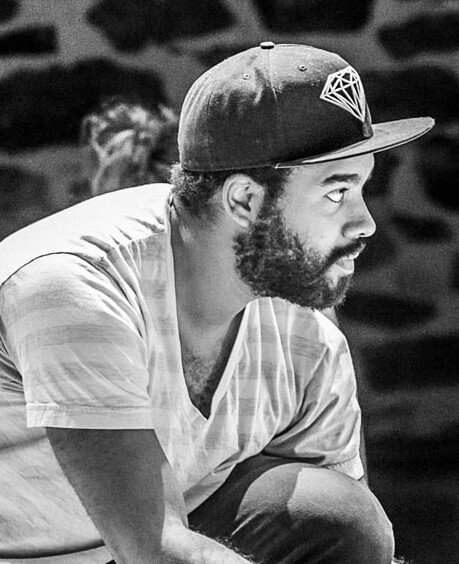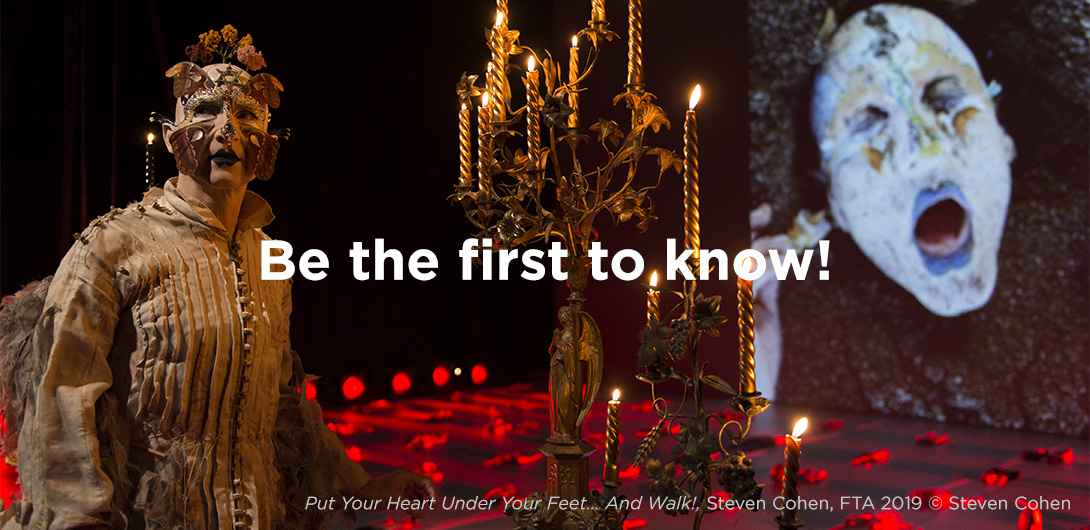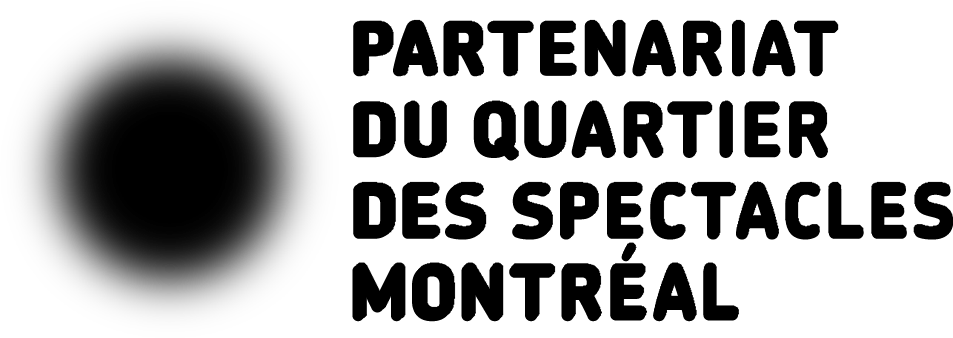This installation leverages your extensive experience as a lighting designer. What were you looking for with this particular project?
I was wondering how I could create an enclosed space devoid of shadows on the walls as well as on the floor. The traces that are left there are not shadows, but rather light. They are reverse shadows. If the dancer rolls on the ground, he will activate the floor with the heat of his body and leave luminous traces. I wanted to create a space that would take the participants elsewhere. A totally immersive experience. The space does not project shadows—light pours in from the ground and the space itself. There are no lamps or spotlights. The light emanates directly from the space and its matter, from the ground. This relationship between bodies, objects, space, and light is what I wanted to emphasize. I hope that people will want to spend a long time in this space. It is truly a sensory experience.
I collaborated with the contemporary dancer Lael Stellick around two notions: waiting and sleep. From a choreographic standpoint, this is what we have focused on, but there is also a component wherein the audience members will be able to enter the space and to transform it with their very presence, to really feel imbued with what is going on.
As both participants and witnesses to the changes in lighting, would you say that the audience members contribute to the dramatic build-up, in some way?
The work is not a narrative one, but there are instances where the space is activated. If you spend an hour there, you will experience it in one way, but if you stay longer, everything will change and so will the experience. This is a living installation that evolves in reaction to the participants, be it the dancer, me or the audience that might interact with it in a certain way. People can watch passively, but they may also act directly onto the surface, for example by choosing to lie down on the floor. It will feel like lying on a frozen lake or floating across space. The fact that there are no shadows creates a sense of lightness.
I started working with the matter itself, and later wondered how I might incorporate the performance. I wanted a space where you could feel softer, more sensitive. There is very little light, so how can we create an opening for seeing in this dark space? Its evolution is highly affected by the fact that the matter is charged with light and that gradually, over the course of several hours, it loses this charge. All along, the light weakens, but our eyes adjust. I like this idea of loss, of something that is activated and that then slowly loses its energy over time.
It is very difficult to leave the space, because it is comforting, and we crave human contact, being in a space with other humans, a space where there is almost nothing besides our bodies and their outlines. We are physically very close, but we act like shadows. There is something very moving in this corporeal poetry. I would like spectators to leave with the sense of having experienced something new.
Rather than creating a theatre or dance piece, I wanted to provide a space for people to stay as long as they like. Sort of like a sunset that lasts for hours. Unfortunately, we have had to change the context of the presentation because of the pandemic, and so the time allotted to each visitor will be limited. The sound component also evokes slowness. I wanted to avoid following a predefined mould—everything is open and renews itself every day. The light is what guides us and determines what we see.
Do you feel a certain kinship with other artists, local or international ones?
Yes, for instance Annie Gagnon, the choreographer I work with. Her work really resonates with me, especially her human approach, the way she strives to engage with the audience, often through touch, as well as her great empathy for the spectators.
I am also very interested in visual artists such as Olafur Eliasson or James Turrell, who create giant installations using a light or a colour. What I like when I go to the museum, rather than simply contemplating a framed work, is for conventions to be broken so that I can travel throughout a space arranged by the artist. I studied sculpture and have attempted to combine everything I had learned with my work as a designer and collaborator in dance and theatre pieces. I wanted to create a sculptural work, an installation that eschews the codes of dance and theatre, but where I could still draw on performance art.
I also wanted to present a minimalist piece, a space where something powerful could be experienced. Young or old, anyone can experience this space. I’d like children to come play there, so that the work can reveal itself through the active participation of people.












